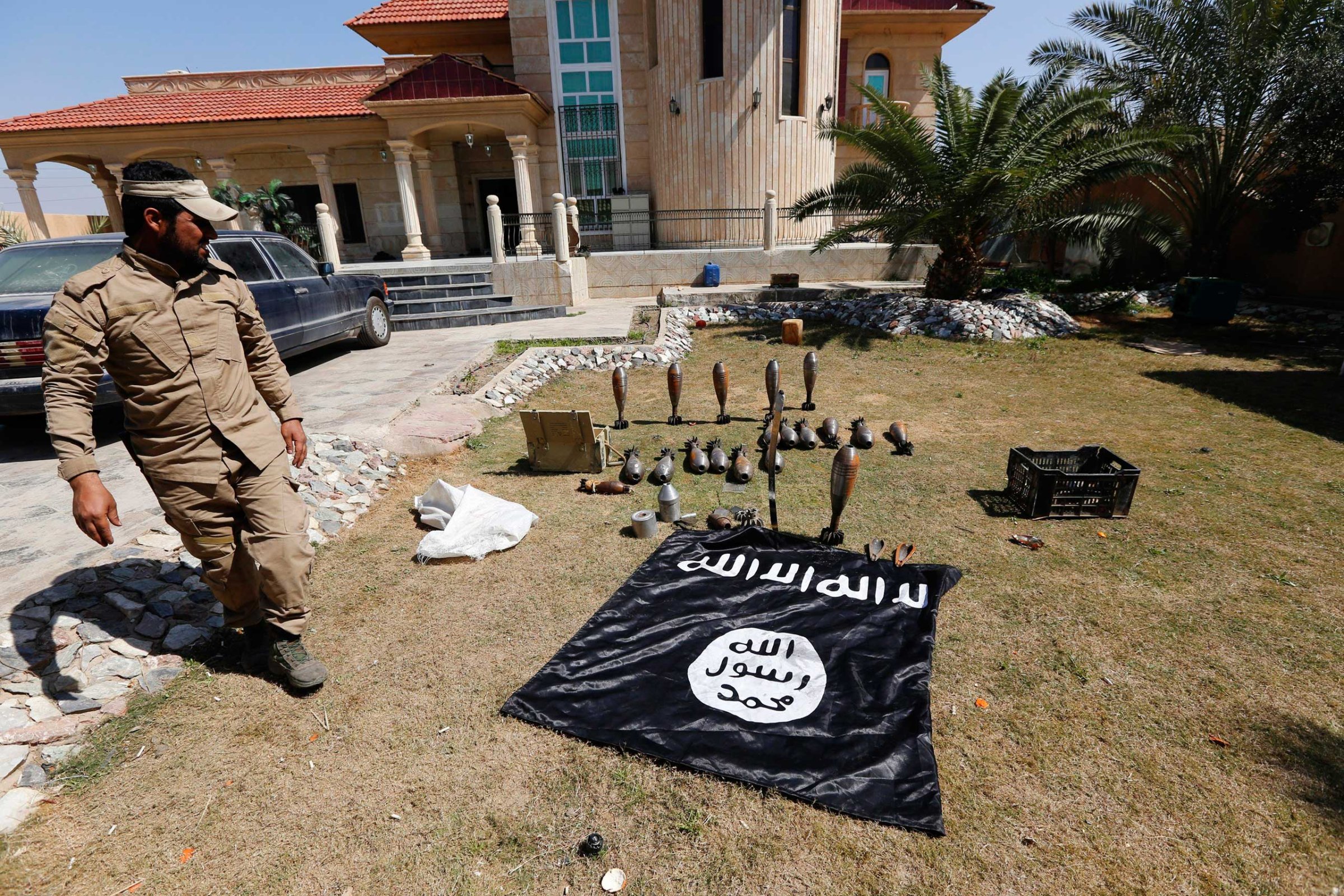
Correction appended
Although Iraqi forces have been waging war against ISIS in Tikrit for two weeks, the battle to drive the jihadists from the town has come to a stalemate. The militants remain stubbornly lodged there despite an assault from Iraqi security forces numbering in the thousands, along with 20,000 Shi’ite militiamen.
Last week Iraqi officials and leaders from Popular Mobilization Forces, a coalition of the mostly Shi’ite militias, boasted they would have control of Tikrit within days, but now their offensive is on hold even though the numbers are on their side.
“I’d be surprised if there was more than a thousand ISIS in there,” says Christopher Harmer, a senior analyst with the Institute for the Study of War, who completed several tours with the U.S. Army in Iraq. “Based on the numbers alone, they should have done it a long time ago.”
So why haven’t they? ISIS, which has controlled the Tigris river hometown of former Iraqi leader Saddam Hussein since it took over swathes of Iraq last June, has used those months to prepare for this battle. The militants are embedded in the town’s center, and the Iraqi-led fighters say they have used snipers and IEDs—improvised explosive devices—to create a dangerous fortress. While most civilians have fled, some still remain, making combat even more complicated.
“It’s street to street now,” says Karim al-Nouri, a spokesman for the Popular Mobilization Forces. He says the operation has already retaken 8,000 square kilometers from ISIS near Tikrit, and has not been stopped but merely slowed in its tracks. “Now we need to be more careful so we can have victory with less casualties.”
But neither the Iraqi national forces nor these Shi’ite militias are trained for this sort of offensive operation, says Harmer. The Shi’ite militiamen are capable and experienced fighters, many having fought the Americans during the Iraq war. But their role is usually to defend their own territory, not advance on other forces. “When you get right down to it, this is a super well-armed neighborhood watch group,” says Harmer. ISIS, on the other hand, is “used to this kind of warfare,” he says. “They are used to being outnumbered.”
The Iraqi army has reclaimed territory elsewhere with the help of the U.S.-led coalition and its air strikes, but those have been conspicuously absent this time. That may be because of the involvement of the Iranians in what has become the biggest offensive yet against ISIS in Iraq. Images posted online claim to show American Abrams and Iranian Safir-74 tanks side by side moving against ISIS positions in the Saladin Governorate, while Major General Qasem Soleimani, who coordinates Iran’s support for Hezbollah and the Syrian regime, has been photographed on the battlefield.
Nouri, the Popular Mobilization Forces spokesperson, is coy about Iranian involvement, saying only that the Iranians have a planning and advisory role, and that there are no Iranian troops or weapons on the battlefield. “Of course if Iran wants to help us to fight ISIS they are welcome,” he says. “Anyone who wants to help us fight terrorism is welcome.”
Despite this entreaty, the U.S. said it had not been invited to provide air support when the offensive began. “Iraq is their country, it’s their military, their fight against [ISIS],” Pentagon spokesman Army Col. Steve Warren told reporters in Iraq earlier this month. “They didn’t request support for it, and we didn’t provide support for it.”
But now that the advance on Tikrit has slowed, Baghdad has signaled American jets might be needed to help forces advance on Tikrit. But that will be hard for Washington, given Iran’s role in the operation.
“The U.S. cannot be in the position of actively supporting an Iran offensive,” says Harmer. “For all practice purposes the Shi’ite militias are functioning as a subset of the Islamic Revolutionary Guards, or Quds force.”
Nouri says U.S. air strikes wouldn’t help much in the battle for Tikrit’s center. It would be technically difficult as the militants are embedded with civilians, and besides the U.S. has no one on the ground to call in the strikes. But what the U.S. could do is hit ISIS positions outside the town and convoys heading to Tikrit from places like Mosul, the largest city under control of ISIS and its base of operations.
Without that, there’s no telling how long the battle for Tikrit might continue. Nouri says it will be over within a week, but officials were saying that a week ago. What is clear is that the halting progress made so far will be giving some in Washington and Baghdad pause for thought. The Tikrit operation has been seen as a trial run for the eventual operation to retake Mosul, one that U.S. and Iraqi officials have suggested might happen as soon as the spring. But the longer this goes on, the less likely ISIS will be driven from its Iraqi stronghold any time soon.
Correction: The original version of this story incorrectly stated which group Christopher Harmer described as a “super well-armed neighborhood watch group.” He was referring to the Shi’ite militiamen.
More Must-Reads from TIME
- Why Trump’s Message Worked on Latino Men
- What Trump’s Win Could Mean for Housing
- The 100 Must-Read Books of 2024
- Sleep Doctors Share the 1 Tip That’s Changed Their Lives
- Column: Let’s Bring Back Romance
- What It’s Like to Have Long COVID As a Kid
- FX’s Say Nothing Is the Must-Watch Political Thriller of 2024
- Merle Bombardieri Is Helping People Make the Baby Decision
Contact us at letters@time.com